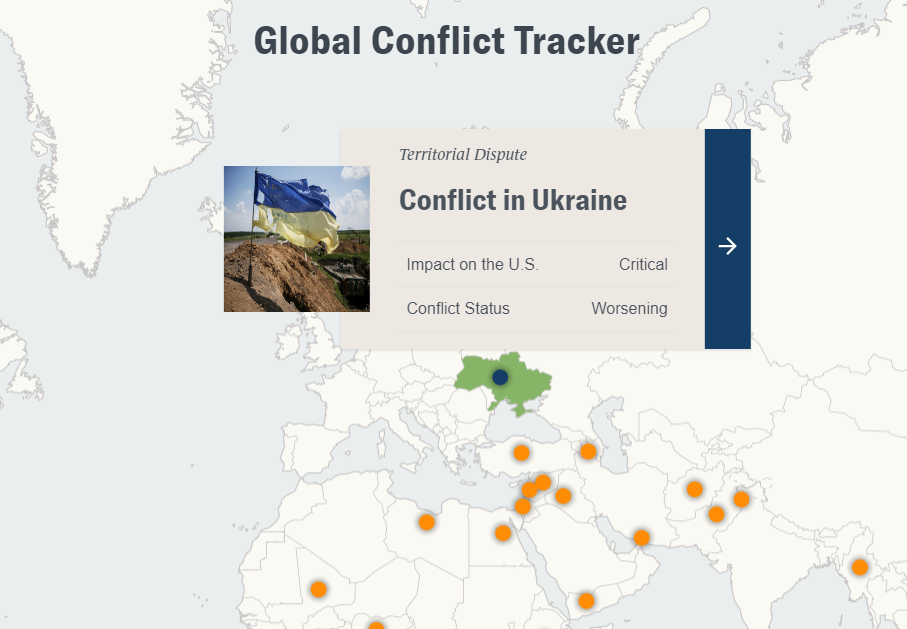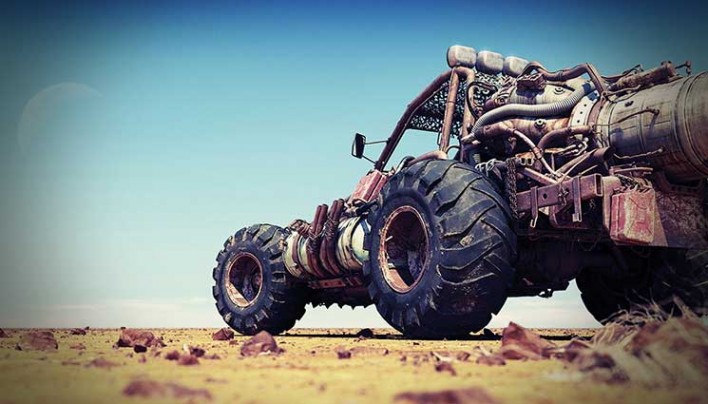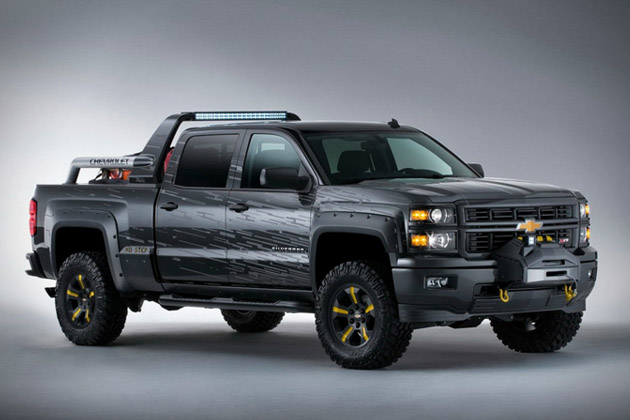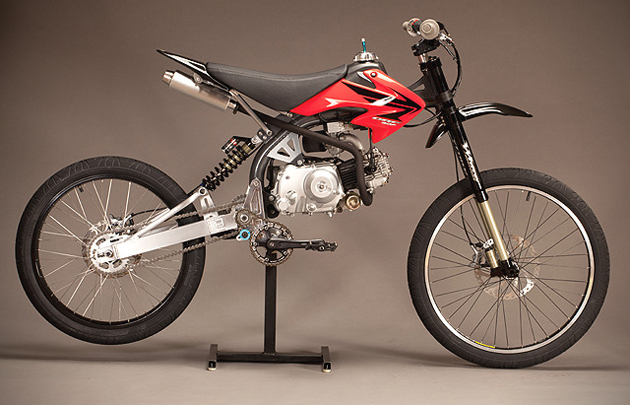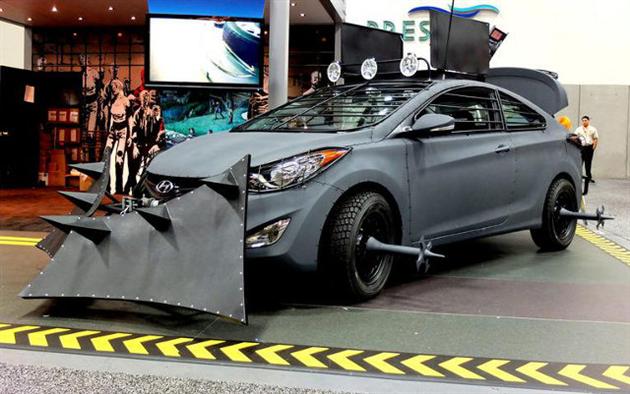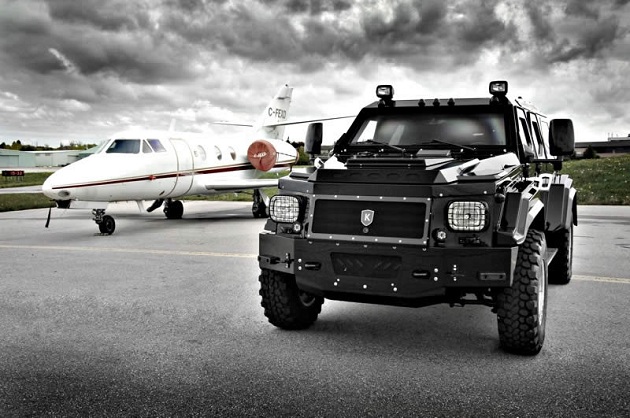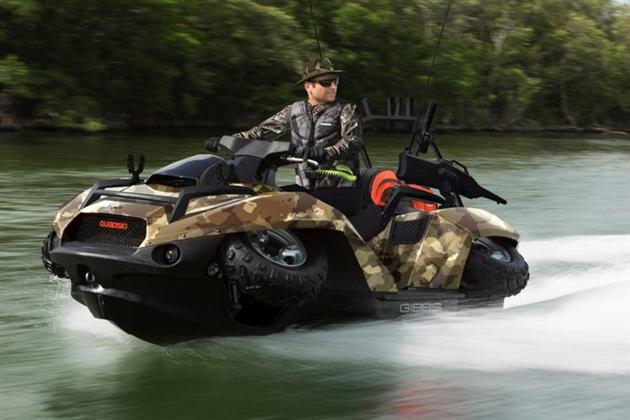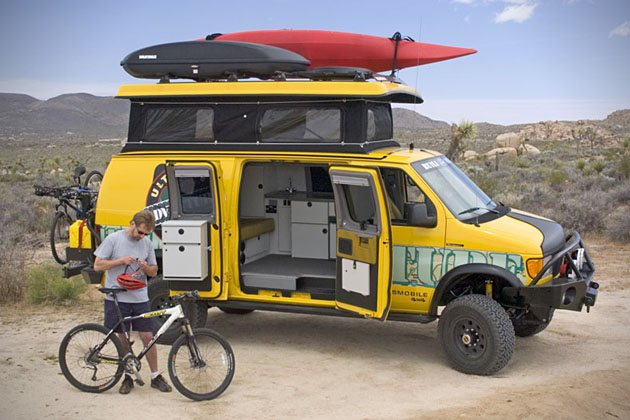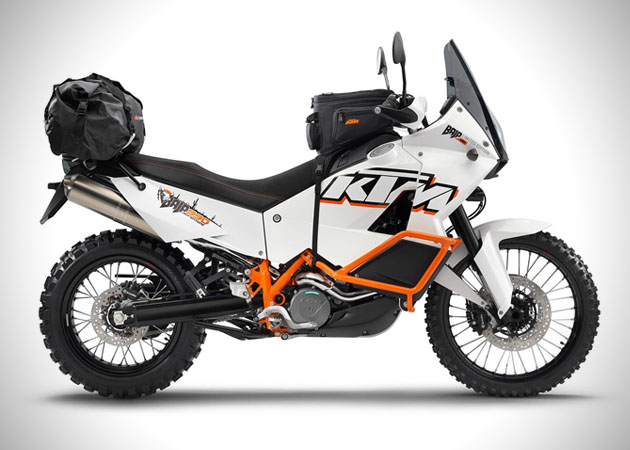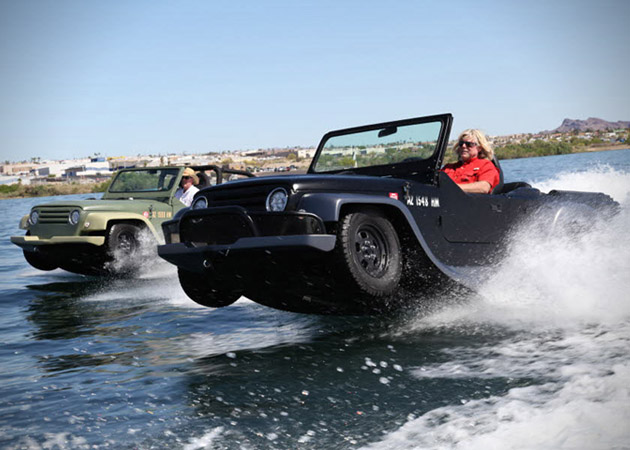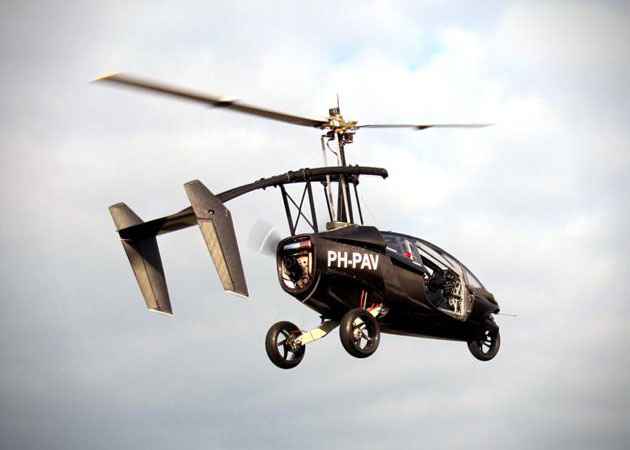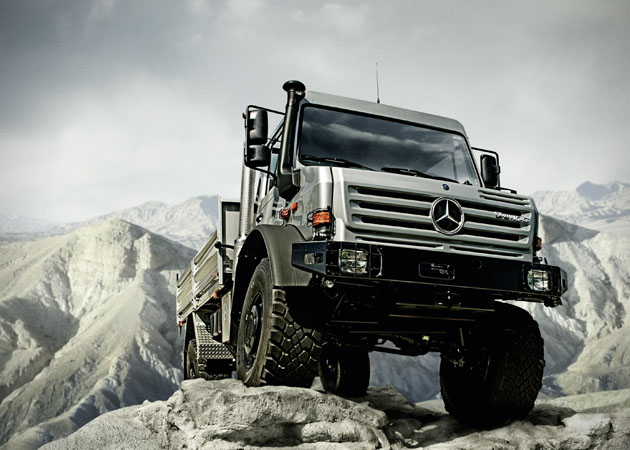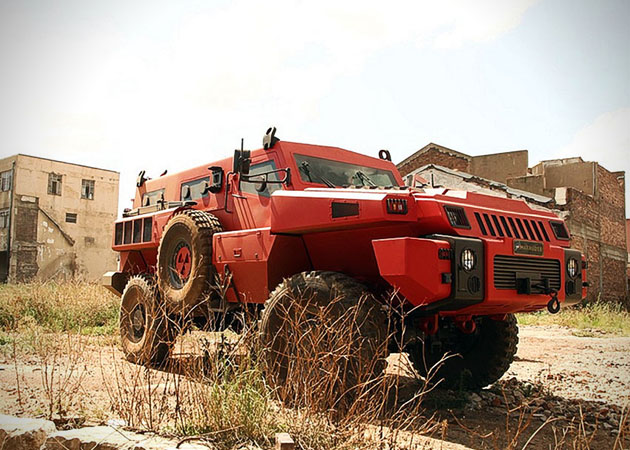- Yemeni Civil War (2014–present) Location: Yemen Parties involved: Yemeni government, Houthi rebels supported by Iran, and other factions Cause: Political and economic grievances, regional power struggle, and sectarian tension Status: Ongoing
- Syrian Civil War (2011–present) Location: Syria Parties involved: Syrian government, opposition forces, and extremist groups Cause: Political repression, economic grievances, and sectarian tension Status: Ongoing, with the Syrian government regaining control of most of the country, but fighting continues in some areas.
- Tigray War (2020–present) Location: Tigray region, Ethiopia Parties involved: Tigray People’s Liberation Front and Ethiopian government, with support from neighboring Eritrea Cause: Political power struggle and grievances between the Tigray region and the central government Status: Ongoing, with reports of widespread human rights abuses and humanitarian crisis.
- Nagorno-Karabakh conflict (2020) Location: Nagorno-Karabakh region, between Armenia and Azerbaijan Parties involved: Armenia and Azerbaijan Cause: Territorial dispute over the Nagorno-Karabakh region Status: Ended with a ceasefire agreement in November 2020, but tensions and sporadic clashes continue.
- War in Donbass (2014–present) Location: Eastern Ukraine Parties involved: Ukrainian government forces and Russian-backed separatists Cause: Political and economic grievances, regional power struggle, and ethnic tension Status: Ongoing, with a ceasefire agreement in place but fighting continues in some areas.
- Israeli-Palestinian conflict (ongoing) Location: Israel and the Palestinian territories (Gaza Strip and West Bank) Parties involved: Israel and Palestinians Cause: Territorial dispute and the establishment of a Palestinian state Status: Ongoing, with sporadic outbreaks of violence and limited progress towards a peaceful resolution.
- Myanmar Civil War (1948–present) Location: Myanmar Parties involved: Myanmar government and various ethnic armed groups Cause: Political power struggle, ethnic and religious tension, and resource control Status: Ongoing, with reports of widespread human rights abuses and displacement.
- Afghanistan War (2001–present) Location: Afghanistan Parties involved: US-led coalition forces and the Taliban Cause: The September 11 attacks and the Taliban’s support for terrorist groups Status: Ongoing, with the Taliban regaining control of much of the country following the withdrawal of US troops in 2021.
- Libyan Civil War (2014–present) Location: Libya Parties involved: UN-backed Government of National Accord and the Libyan National Army Cause: Political power struggle and economic grievances Status: Ongoing, with a ceasefire agreement in place but significant instability and humanitarian crisis.
- Somalia Civil War (1991–present) Location: Somalia Parties involved: Somali government, various militias, and Islamist extremist groups Cause: Political instability, ethnic and religious tension, and resource control Status: Ongoing, with reports of widespread violence, displacement, and humanitarian crisis.Here are some verified sources for more information on the conflicts and wars mentioned:
- Yemeni Civil War: https://www.un.org/en/
chronicle/article/yemeni- civil-war-where-things-stand- and-what-needs-happen - Syrian Civil War: https://www.un.org/press/en/
2022/sc14649.doc.htm - Tigray War: https://www.icrc.org/en/
document/ethiopia-tigray- conflict - Nagorno-Karabakh conflict: https://www.un.org/press/en/
2020/sc14370.doc.htm - War in Donbass: https://www.osce.org/ukraine-
smm - Israeli-Palestinian conflict: https://www.un.org/unispal/
- Myanmar Civil War: https://www.hrw.org/world-
report/2022/country-chapters/ myanmar - Afghanistan War: https://www.un.org/press/en/
2021/sc14601.doc.htm - Libyan Civil War: https://www.icc-cpi.int/libya
- Somalia Civil War: https://www.un.org/somalia/
- Yemeni Civil War: https://www.un.org/en/
100 Items That Will Disappear First In The U. S. When The SHTF (updated)
We saw it with Sandy, and now you are seeing it with the severe winter storms this year. We saw it with Covid, the un-prepared hoards of people buying anything and everything off of the store shelves. (remember the toilet paper run of 2020)
Natural disasters happen. It’s Mother Nature. Do you think you could last a few days, weeks, or even months without the basics of food, water, gas and electricity?
What is your plan? Do you have food insurance built up? Water? Fuel? Etc…
You can start small and build up your supplies over time. You may even have many of theses items already.
Below is a list of the 100 items most likely to disappear in a disaster scenario:
1. Generators (Good ones cost dearly. Gas storage, risky. Noisy…target of thieves; maintenance etc.)
2. Water Filters/Purifiers
3. Portable Toilets
4. Seasoned Firewood. Wood takes about 6 – 12 months to become dried, for home uses.
5. Lamp Oil, Wicks, Lamps (First Choice: Buy CLEAR oil. If scarce, stockpile ANY!)
6. Coleman Fuel. Impossible to stockpile too much.
7. Guns, Ammunition, Pepper Spray, Knives, Clubs, Bats & Slingshots.
8. Hand-can openers, & hand egg beaters, whisks.
9. Honey/Syrups/white, brown sugar
10. Rice – Beans – Wheat
11. Vegetable Oil (for cooking) Without it food burns/must be boiled etc.,)
12. Charcoal, Lighter Fluid (Will become scarce suddenly)
13. Water Containers (Urgent Item to obtain.) Any size. Small: HARD CLEAR PLASTIC ONLY – note – food grade if for drinking.

14. Mini Heater head (Propane) (Without this item, propane won’t heat a room.)
15. Grain Grinder (Non-electric)
16. Propane Cylinders (Urgent: Definite shortages will occur.
17. Survival Guide Book.
18. Mantles: Aladdin, Coleman, etc. (Without this item, longer-term lighting is difficult.)
19. Baby Supplies: Diapers/formula. ointments/aspirin, etc.
20. Washboards, Mop Bucket w/wringer (for Laundry)
21. Cookstoves (Propane, Coleman & Kerosene)
22. Vitamins
23. Propane Cylinder Handle-Holder (Urgent: Small canister use is dangerous without this item)
24. Feminine Hygiene/Hair-care/Skin products.
25. Thermal underwear (Tops & Bottoms)
26. Bow saws, axes and hatchets, Wedges (also, honing oil)
27. Aluminum Foil Reg. & Heavy Duty (Great Cooking and Barter Item)
28. Gasoline Containers (Plastic & Metal)
29. Garbage Bags (Impossible To Have Too Many).
30. Toilet Paper, Kleenex, Paper Towels
31. Milk – Powdered & Condensed (Shake Liquid every 3 to 4 months)
32. Garden Seeds (Non-Hybrid) (A MUST)
33. Clothes pins/line/hangers (A MUST)
34. Coleman’s Pump Repair Kit
35. Tuna Fish (in oil)
36. Fire Extinguishers (or large box of Baking Soda in every room)
37. First aid kits
38. Batteries (all sizes…buy furthest-out for Expiration Dates)
39. Garlic, spices & vinegar, baking supplies
40. Big Dogs (and plenty of dog food)
41. Flour, yeast & salt
42. Matches. {“Strike Anywhere” preferred.) Boxed, wooden matches will go first
43. Writing paper/pads/pencils, solar calculators
44. Insulated ice chests (good for keeping items from freezing in Wintertime.)
45. Work-boots, belts, Levi’s & durable shirts
46. Flashlights/LIGHTSTICKS & torches, “No. 76 Dietz” Lanterns
47. Journals, Diaries & Scrapbooks (jot down ideas, feelings, experience; Historic Times)
48. Garbage cans Plastic (great for storage, water, transporting – if with wheels)
49. Men’s Hygiene: Shampoo, Toothbrush/paste, Mouthwash/floss, nail clippers, etc
50. Cast iron cookware (sturdy, efficient)
51. Fishing supplies/tools
52. Mosquito coils/repellent, sprays/creams
53. Duct Tape
54. Tarps/stakes/twine/nails/rope/spikes
55. Candles
56. Laundry Detergent (liquid)
57. Backpacks, Duffel Bags
58. Garden tools & supplies
59. Scissors, fabrics & sewing supplies
60. Canned Fruits, Veggies, Soups, stews, etc.
61. Bleach (plain, NOT scented: 4 to 6% sodium hypochlorite)
62. Canning supplies, (Jars/lids/wax)
63. Knives & Sharpening tools: files, stones, steel
64. Bicycles…Tires/tubes/pumps/chains, etc
65. Sleeping Bags & blankets/pillows/mats
66. Carbon Monoxide Alarm (battery powered)
67. Board Games, Cards, Dice
68. d-con Rat poison, MOUSE PRUFE II, Roach Killer
69. Mousetraps, Ant traps & cockroach magnets
70. Paper plates/cups/utensils (stock up, folks)
71. Baby wipes, oils, waterless & Antibacterial soap (saves a lot of water)
72. Rain gear, rubberized boots, etc.
73. Shaving supplies (razors & creams, talc, after shave)
74. Hand pumps & siphons (for water and for fuels)
75. Soy sauce, vinegar, bullions/gravy/soup-base
76. Reading glasses
77. Chocolate/Cocoa/Tang/Punch (water enhancers)
78. “Survival-in-a-Can”
79. Woolen clothing, scarves/ear-muffs/mittens
80. Boy Scout Handbook, / also Leaders Catalog
81. Roll-on Window Insulation Kit (MANCO)
82. Graham crackers, saltines, pretzels, Trail mix/Jerky
83. Popcorn, Peanut Butter, Nuts
84. Socks, Underwear, T-shirts, etc. (extras)
85. Lumber (all types)
86. Wagons & carts (for transport to and from)
87. Cots & Inflatable mattress’s
88. Gloves: Work/warming/gardening, etc.
89. Lantern Hangers
90. Screen Patches, glue, nails, screws,, nuts & bolts
91. Teas
92. Coffee
93. Cigarettes
94. Wine/Liquors (for bribes, medicinal, etc,)
95. Paraffin wax
96. Glue, nails, nuts, bolts, screws, etc.
97. Chewing gum/Candy/Chocolate
98. Atomizers (for cooling/bathing)
99. Hats & Bandanas, cotton neckerchiefs
100. Goats/Chickens/Rabbits
Some Thoughts From a Sarajevo War Survivor:
Experiencing horrible things that can happen in a war – death of parents and
friends, hunger and malnutrition, endless freezing cold, fear, sniper attacks.
1. Stockpiling helps. But you never no how long trouble will last, so locate
near renewable food sources.
2. Living near a water well with a manual pump is like being in Eden.
3. After awhile, even gold can lose its luster. But there is no luxury in war
quite like toilet paper. Its surplus value is greater than gold‘s.
4. If you had to go without one utility, lose electricity – it’s the easiest to
do without (unless you’re in a very nice climate with no need for heat.)
5. Canned foods are awesome, especially if their contents are tasty without
heating. One of the best things to stockpile is canned gravy – it makes a lot of
the dry unappetizing things you find to eat in war somewhat edible. Only needs
enough heat to “warm”, not to cook. It’s cheap too, especially if you buy it in
bulk.
6. Bring some books – escapist ones like romance or mysteries become more
valuable as the war continues. Sure, it’s great to have a lot of survival
guides, but you’ll figure most of that out on your own anyway – trust me, you’ll
have a lot of time on your hands.
7. The feeling that you’re human can fade pretty fast. I can’t tell you how many
people I knew who would have traded a much needed meal for just a little bit of
toothpaste, rouge, soap or cologne. Not much point in fighting if you have to
lose your humanity. These things are morale-builders like nothing else.
8. Slow burning candles and matches, matches, matches
12 Best Vehicles For Surviving The Zombie Apocalypse
Since the episode last night of Doomsday Preppers had a guy modifying an old school bus to be his battle wagon after the destruction caused by of an F5 tornado, I thought I would share this article showing other options you might consider. While I will admit, part of me wants to build my own gassifier engine and go to town on an old bus with a cutting torch, these options below come with considerably less work, risk of fire and could run much better than that old yellow tank. If nothing else, you won’t need to make your own employees work on this for you. For the rest of us that don’t have our own companies that might be a non-starter.
If you are going to purchase a vehicle that you can use to bug out, one of these beauties below might be the ticket. The good folks at the HiConsumption site pulled this great list together.
With The Walking Dead season premiere set to kick off in just over a week, we once again got to thinking about the zombie apocalypse. We got you covered last year with a list of zombie proof gear to help fend off the undead, but the reality is you aren’t going to be able to take on those flesh eating zombies on foot. You need wheels, and your current vehicle just isn’t going to cut it. Now imagine for a second that you had perfect circumstances – imagine you can get your hands on nearly anything you could think of (within reason of course). That’s the approach we took when creating this list of the best vehicles for the zombie apocalypse. You need something reliable, capable, and let’s be honest, you need something badass. You’ve been prepping for this zombie outbreak for years now, and you want to let everyone know that you are the baddest S.O.B. on the planet. Check out some of our favorite options for the end of the world in the 12 best vehicles for surviving the zombie apocalypse below.
1. Chevrolet Silverado Black Ops
Let’s start things off with a practical choice. Chevy makes a solid truck, there’s no doubt about it, and this one was built specifically for unforeseen emergencies. Although we can’t say that the zombie outbreak was “unforeseen,” we can certainly classify it as an emergency. The fully capable 4×4 features a 5.3 liter EcoTec3 V8 engine with plenty of power (355 ponies to be exact) along with lower body armor, raised suspension, solar power pack, generator, military First Aid Kit, gas masks, a crate of food with Top Ramen and Twinkies (your new favorite food groups in this post apocalyptic world), and a whole lot more. [Details]
2. Motoped Motorized Bicycle
You’re going to need something that is nimble and quick. Sure the big bulky trucks have their place, but a solid 2 wheeled companion is an essential. Motoped created a simple conversion kit that lets you outfit your mountain bike with Honda 50-190cc motor for about $1,000. [Details]
3. Hyundai Zombie Survival Car
If Hyundai is good enough for Rick and his crew on The Walking Dead, we’d suffice to say that it’s good enough for us. Thankfully the folks at Hyundai take their zombie response research very seriously, and have outfitted one of their Elantra coupes with a ton of security features from a zombie plow with massive spikes to armored windows and spiked all terrain tires for going where no other vehicle can go. [Details]
4. Knight XV Fully Armored SUV
Who says you can’t stay drenched in luxury in this new post-apocalyptic world? The Knight XV is luxury and ruggedness, fused into one completely bad-ass SUV. The vehicle is packed with a 6.8 liter V10 engine, seating for 6, night vision cameras and bulletproof armor. [Details]
5. Gibbs Quadski Amphibious 4 Wheel Drive Quad
It’s been debated for years whether or not zombies will be able to swim. From our extensive research (hundreds of hours watching zombie movies and shows), we’re going to go with no, they can’t swim. The 4WD Gibbs Quadski is perfect for tackling tough terrain, and within 5 seconds, the vehicle can tuck its tires to hit the water. Thanks to the 175 horsepower engine, you can hit speeds of up 45 miles per hour on land, which is plenty fast to leave those undead bastards in the rear view. [Details]
6. Mercedes-Benz G63 AMG 6×6
Not only will MB’s 6 wheeled off road monster provide you with a fully capable means of transportation, but it will also bring about some nice entertainment. For such a massive vehicle (8,400 pound curb weight), the 5.5 liter AMG V8 powered 6×6 is actually quite agile. Although it’s based on the military version, this thing handles more like a truck than a tank. [Details]
7. Sportsmobile Ultimate Adventure Vehicle
The folks at Sportsmobile design rugged Mercedes-Benz and Ford E-350 vans that are capable of tackling any off road terrain, while also providing a mobile home living experience. The cargo van has been equipped with everything one needs to survive in the wild, with plenty of room for bikes and water vessels. [Details]
8. KTM 990 Adventure Baja Edition
Again, enclosed cars and trucks are great, but 2 wheelers serve a vital role in your survival. There are few motorcycles that perform quite like this bad boy from KTM. Crowned the most off road capable travel enduro in the world, the 990 Adventure Baja has been outfitted with everything you need from suspension to power plant to ensure that you can transition from the asphalt to the dirt roads. There’s a slim chance anyone will be keeping up with road maintenance after the virus spreads, and this V-Twin powered machine will be able to tackle any beaten road you can throw at it. [Details]
9. WaterCar Panther Amphibious Jeep
It goes without saying that a Jeep Wrangler will always be a solid choice when it comes to the inevitable apocalypse. You can’t go wrong when it comes to Jeep, but a Jeep that can quickly convert to a boat? Now that’s a real winner. Assuming that zombies can’t swim, this thing is great for escaping those sticky situations. Packed with a 3.7 liter V6 motor built by the Japanese auto makers at Honda, this Jeep is capable of speeds exceeding 40 miles per hour on water, and 80 mph on land. The best part is the transition from land vehicle to boat takes only 15 seconds. [Details]
10. Pal V One Personal Air and Land Vehicle
Technically the results are still inconclusive when it comes to zombie’s ability to swim (although we think not), but there is one thing we’d put money on – zombies will not be able to fly. With that being said taking to the air can be risky business during this zombie infested time era (imagine crashing into a horde of zombies), but bear with us on this vehicle. The Pal V One acts like a sports car on the ground, accelerating from zero to sixty miles per hour in just 8 seconds, while reaching a top speed of 112 mph. In just minutes, the vehicle can be transformed into a Gyro-Copter, flying at altitudes of about 4,000 feet (well below commercial flight routes, although we can’t imagine there will be many commercial flights during the zombie apocalypse). The vehicle’s fuel tank can store enough fuel for over 300 miles of flight time. Now this vehicle is currently still in the “development” process, but the concept, if executed well, could make a nice addition to your stable of vehicles rather than your sole choice of transportation. [Details]
11. Mercedes-Benz Unimog
The folks at Benz said it best when they said the monster of a vehicle known as the Unimog offers “absolute off-road supremacy.” You can take Mercedes’ word for it, or you can research the 10 different models that were designed for disaster emergencies in the harshest conditions. This could be a bit impractical as your only means of transportation, but it could be a huge asset in your stash of vehicles. [Details]
12. Paramount Group Marauder
Hands down the baddest vehicle on the planet, the Marauder will withstand any test you throw at it. The armored vehicle destroys everything in its path. Features include long range fuel tanks, the ability to survive TNT explosions, ultra modern climate control system, run flat tire that can be pierced by 12.7mm bullets, anti blast seats, and so much more. The vehicle has a fording depth of half the vehicle, meaning it can swim too. Reaching speeds of 120 kilometers per hour, this thing is far from a slouch. If you can get your hands on one of these, do it. [Details]
Source: 12 Best Vehicles For Surviving The Zombie Apocalypse – Trendwerks
Does It Really Take $50,000 To Be A Prepper?
What Does it Cost to Prepare
Scouring the internet for information on disaster preparedness sheds an interesting light on what most people think it costs to ready themselves for the unexpected. Guides abound on how to prepare with minimal investments – but most put the focus on unreliable foodstuffs, tools, and supplies.
At the opposite end of the spectrum are the complete “how to” guides, that claim to show a family how to prepare for any emergency. These guides tend to indicate that the total cost of preparing a family of four for a natural disaster ranges from $5,000 to over $50,000.

Preparing for the Worst – Not As Expensive As Most Think
Preparing for a disaster doesn’t mean that you and your family could survive in an underground bunker for thirty years without ever accessing the outside world. It means preparing for the inevitable and unexpected emergencies that can arise at any time.
Disaster preparedness isn’t limited to hurricanes, blizzards, and failures of the national infrastructure. It extends into the smaller disasters that we encounter while going about our everyday lives – like getting stranded in a broken down vehicle in the middle of nowhere, or finding yourself injured while on a hike.
Preparing for these situations is relatively inexpensive. With the help of products like these Backpack Survival Kits it can be incredibly simple, too.

Preparing for Different Types of Emergencies
While the ideal disaster preparedness plan includes provisions for long periods of isolation from modern amenities (such as running water and food supplies), the majority of emergencies the average person will encounter require far less extensive planning.
Breakdown / Stranded Emergencies – If your vehicle were to break down, or if you found yourself stranded in the middle of nowhere, what would you do? With a ready-made kit, like the Guardian Elite (which comes prepared in a sturdy, easy-to-carry back pack) you would have food, and first aid supplies on hand. Toss in a few bottles of water before you head out, and you’ll have that covered, too.
Temporarily Unavailable Food Supplies – Whether it’s a true natural disaster or merely a predicted blizzard, when the newsman warns that rough weather is moving in, everyone rushes to the grocery store and clears the shelves. Having a one month supply of food on hand would ensure that your family doesn’t go hungry, and with kits like the Meal Package, is not only affordable, but incredibly easy to store.
In both of the cases described above, your total investment is going to be far less than what you might expect. Since the kits are ready made and based on government recommendations for preparedness, you can also be sure that they’re relatively complete.
Don’t put off preparing for disaster because you don’t think you can afford it – it’s far less expensive than you think.
Please share your cost saving prepper and survival ideas in the comments below.
How to Survive in Space After the Ultimate Disaster

Source: Emergency-Management-Degree.org
How to Survive in Space After the Ultimate Disaster
Prepper’s guide to surviving in space
Could humanity actually survive the ultimate emergency: the end of the world? From black holes to starvation, these are the essentials when it comes to surviving in space after a disaster destroys our Mother Earth.
Radiation
Simply leaving Earth’s atmosphere exposes you to more radiation than is healthy.
Earth’s atmosphere protects from radiation the way a 1 meter thick slab of metal would.
Problem:
1 Sievert = +5.5% rise in risk of fatal cancers
One round trip to Mars = .66 Sieverts
The equivalent of a full body CT scan every 5-6 days.
Solution:
Prolonged habitation on planets with weak atmospheres would require living underground.
Or,
A magnetosphere (for spaceships):
Magnetic fields like what earth is encased in can deflect radiation.
Shields need to be made of fibers.
Bulky materials are weak with spaces and imperfections.
A spider’s web is strong because it is made of individual unbroken threads.
Radiation sensors can alert space travelers when they need to be behind shields.
Starvation
It costs $10,000 per lb of food sent to the International Space Station–we’re going to need to grow food as we fly.
Astronauts currently get 3.8 pounds of food per day.
This is 7,000 lbs of food per person to get to mars and back.
Introducing Space Farming!
FOR SPACECRAFT GROWTH, consider:
Plant size
Antioxidants (fights radiation)
Quick growth time
No processing equipment required
Good candidates:
Lettuce
Spinach
Carrots
Tomatoes
Spring onions
Cabbage
Radishes
This keeps you fed, but growing food also:
Reduces stress
Improves mood
Alleviates depression
Promotes social growth
Pushes mental and physical rehabilitation
And increases resistance to general illness.
FOR GROWTH ON FOREIGN PLANETS, consider terraforming:
Ideally leading to an ecosystem, with oxygen produced
Carbon dioxide reduced,
And water recycled.
Space Dust
Wait…Moondust can be deadly?
It is the consistency of flour… so it:
Slips through gaps in equipment,
Is easily kicked up,
Sticks to people
Causing:
Radioactive exposure,
Allergic reactions,
Lung cancer from inhalation.
And Mars dust might be worse.
Space Junk
Debris that orbits the earth travels at 17,500 mph.
Orbiting for millions of years.
Even a small fleck of paint
Can disable a middle-sized spacecraft.
–> Any collision then makes more spaces of space junk.
Static Electricity
Yes…static electricity can disable equipment in space.
In humid conditions, water conducts electrons off of our body.
Space is incredibly dry.
Every time equipment touches other objects in space
chance for equipment crippling static electricity occurs.
NASA has a reverse lightning rod.
Black Holes
Once you’re past the event horizon, that black hole isn’t letting you go.
Event horizon: the point around a black hole where gravity is so strong that light and radiation can’t escape.
–Meaning– We can’t see past the event horizon.
Small black holes(the size of earth) are extreme.
To get pulled past the event horizon
Would instantly turn you into a stream of subatomic particles.
Larger black holes give you more time (literally)
As you accelerate faster and faster you move through time more slowly.
Things falling into the hole in front of you slow in time more.
So in front of you, you can see things previously fallen into the hole
And behind you, you can see things from the future, rapidly approaching you.
Meanwhile you’ll “spaghetifi” because the gravity on your head (or whichever end is falling into the hole first)
will be so much more than that on your feet.
Water
Turns out there is water in space. [11]
Interplanetary dust contains both hydrogen and oxygen, at times mixing to rain down on surfaces.
Interplanetary dust is also the most carbon-rich meteoric substance.
With 30,000 – 40,000 tons of interplanetary dust raining onto Earth yearly
It could have been the origin of life on Earth.
–> And it could sustain us in space in the future.
So surviving in space isn’t a cinch. There’s a reason it’s called the final frontier.
Citations:
- http://www.space.com/21353-space-radiation-mars-mission-threat.html
- http://www.nasa.gov/vision/space/travelinginspace/radiation_shielding.html
- http://www.cnn.com/2013/06/27/world/europe/star-trek-shield/
- http://modernfarmer.com/2013/09/starship-salad-bar/
- http://news.discovery.com/space/history-of-space/kitchen-mars-astronauts-110829.htm
- http://www.sciencedaily.com/releases/2013/03/130328075708.htm
- http://www.cracked.com/article_19158_the-6-weirdest-dangers-space-travel.html
- http://www.wired.com/science/space/news/2005/04/67110
- http://library.thinkquest.org/03oct/01581/SpaceTravelEnglish/dangers/spacedebris.html
- http://www.livescience.com/19683-happen-fall-black-hole.html
- http://www.space.com/24422-solar-wind-makes-water-star-dust.html
Must Have: The Official Year Zero Survival Limited Edition T-Shirts, Mugs, Water Bottles, Hoodies, and More…
Who doesn’t like a cool design. Come check out the entire selection of limited edition awesomeness from Year Zero Survival. Get them while you can.
Click thru any of the images below to see the complete selection:
Please check out all of the product variations and t-shirts styles available. CLICK HERE
Apocalyptic Dish Washing
by Guest Blogger OmegaMan
If you’ve prepared, you’ll hopefully have enough long term food and water supplies in an apocalyptic scenario. Ever wondered how you are going to clean your dishes after you eat with out wasting water?
In all the survival training manuals I have ever read, I have never seen this issue addressed. I know a perfect solution that will not waste your precious water supply but yet effectively clean your utensils and most anything else for that matter. Have you ever heard of Ammonium Chloride?
Probably not by that name. Or, you may have put it in your swimming pool as an algae control. But, most likely you know it by the popular brand name Lysol.
Ammonium chlorides in fact are so effective at sanitation that they are even used by the CDC in their employee wash down stations.
Also, did you know many bars use ammonium chloride compounds to sanitize bar glasses? Have you ever seen the dip and rinse techniques used by bartenders?
I often wondered what they were using, then asked. Much to my surprise one of the most common brands used is: Steramine.
Wow, talk about effective! – 150 tablets for roughly a $10 investment.
Each tablet sanitizes a gallon of wash water. What a great and inexpensive way to protect your family without the huge expense of spray cleaners, soaps and save on storage. All it takes is one minute to effectively destroy most pathogens. Just one minute that will save your precious water supply and may save your life.
I hope you enjoyed my little survival tip, be sure to check back often more more insightful posts. Stay Prepared…OmegaMan
10 Considerations For Your Bug Out Location
If worse came to worse and the world was in chaos, where would you go?
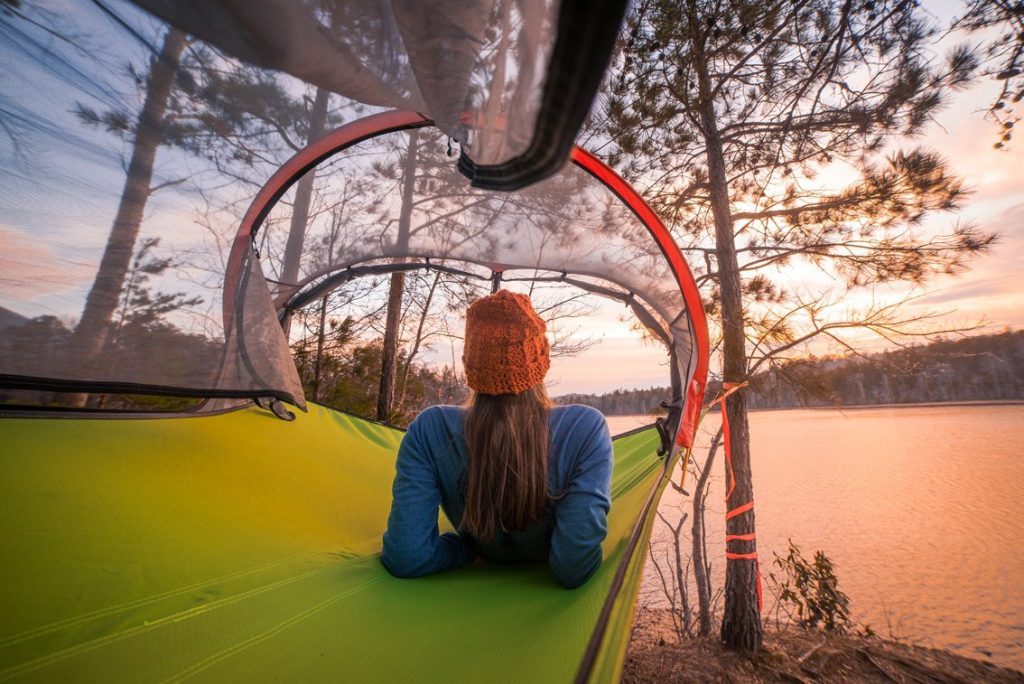
Many people already have determined where they would go – a bug out location – a spot where they could lay low and live for a while if things got pretty bad. If you haven’t decided where you’d go during an emergency, or you already have an idea, here are a few points to consider.
1. How far away?
How far away is your bug out location going to be from your home? With some disasters it doesn’t need to be very far away. For example, a flood zone might only take up a few miles and you might be able to walk to your bug out location. Other disasters, like an economic disaster or nuclear one, might require you to get a little further away from your home.
2. What kind of shelter?
Once you get to your bug out location, what kind of shelter are you going to live in? Is there a house on the property? Are you going to be staying in a tent? The type of shelter that you have might affect how long you are able to stay in the location. If you have to go to your bug out location in the dead of winter, you might be moving if your only living in a tent.
Many people even considering purchasing land in a more remote location so they don’t have to worry about living on someone else’s property. This would allow you to build a home and place supplies there.
3. Do you have a emergency bag?
We’ve talked previously about what kind of items you’d want in an emergency bug out bag or 72-hour kit. Depending on what are you’re in, your emergency items might differ. For example, if your bug out location is right next to a river, you might want a water filter instead of large water containers.
4. Water
Speaking of water, it’s important to know where you will have access to water during an emergency. If man-made water sources aren’t working, you might need to choose a location that has it’s own natural water source. You might want to choose a location close to a lake, river, stream or natural well. Mind you, if man-made water systems are out of service, a lot of people are going to be looking for water in these locations. You’ll also need to consider how susceptible those sources are to contamination.
5. Nearby food
Depending on how long you plan on staying at your bug out location, food might be a major consideration. Are you going to have enough animal or plant life around you that you can just live off the land? Are you going to be packing in all your food? Is the ground suitable for planting?
6. Popular for other people
If you think you’ve found the perfect place for you, there might be others that think the same. While at times, preparing to defend yourself is necessary, you might have a leg up if you know how to barter and maintain a good relationship with other people who are also bugging out in the same location.
7. How are you going to get there?
Like we mentioned above, this really depends on how far away your location is from your home. If it’s close to your home, you might consider walking or riding a bike. If it’s far away, are you going to be driving? This also has an impact on your ability to prepare with food and water. If you are going to be packing in a lot of water and food, how far you have to travel might be a big decision.
8. How many people are you planning for?
Is it just going to be you? Your spouse? Your children? Friends? Extended family? Many times, people will join with a family friend to buy property and build a home on their bug out location. This is probably one of the first things you’ll need to determine because it has a huge effect on your food storage, water storage and other emergency supplies.
9. Communication
How are you going to get in contact with others? Going to bug out location doesn’t necessarily mean that you won’t need to communicate. Are you going to be too far away that you don’t get cell phone coverage? Are you going to get radio and/or TV coverage? Staying in contact with people will help you know what is going on and help you stay prepared.
10. Medical Care
Are you going to have the right supplies at your bug out location? While you might have enough food and water, what if you have a large cut and can’t heal yourself? You might consider a bug out location that is close enough to civilization that you can go to a hospital or find the right drugs that you need but is also far enough away that you can escape if you need to.
What else?
What do you think? What other considerations did you take into account when you were determining your bug out location? Please comment below and let us know. Share your knowledge!
[source]

